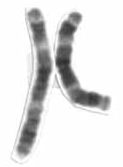Protein S deficiency
(Redirected from Protein S acquired deficiency)
Editor-In-Chief: Prab R Tumpati, MD
Obesity, Sleep & Internal medicine
Founder, WikiMD Wellnesspedia &
W8MD medical weight loss NYC and sleep center NYC
| Protein S deficiency | |
|---|---|

| |
| Synonyms | N/A |
| Pronounce | N/A |
| Specialty | N/A |
| Symptoms | Deep vein thrombosis, pulmonary embolism |
| Complications | Thrombophilia, stroke |
| Onset | Usually in adulthood |
| Duration | Lifelong |
| Types | N/A |
| Causes | Genetic mutation in the PROS1 gene |
| Risks | Family history, pregnancy, oral contraceptive use |
| Diagnosis | Blood test for Protein S levels |
| Differential diagnosis | Antithrombin deficiency, Factor V Leiden, Protein C deficiency |
| Prevention | N/A |
| Treatment | Anticoagulant therapy |
| Medication | N/A |
| Prognosis | Variable, risk of thrombotic events |
| Frequency | 1 in 500 individuals |
| Deaths | N/A |
Protein S deficiency is a rare genetic disorder characterized by an increased risk of venous thromboembolism, which includes conditions such as deep vein thrombosis and pulmonary embolism. The disorder is named after Protein S, a naturally occurring anticoagulant in the body that prevents the formation of excess blood clots. In individuals with Protein S deficiency, there is a reduced level or function of this protein, leading to an increased risk of clot formation.
Causes[edit | edit source]
Protein S deficiency is usually inherited in an autosomal dominant manner, meaning that an affected individual has a 50% chance of passing the disorder to each of their children. The disorder is caused by mutations in the PROS1 gene, which provides instructions for producing Protein S. There are two forms of the disorder: Type I, which is characterized by low levels of Protein S in the blood, and Type II, where the protein is present but not functioning properly.
Symptoms[edit | edit source]
The primary symptom of Protein S deficiency is an increased risk of developing abnormal blood clots. These clots can lead to serious conditions such as deep vein thrombosis, where clots form in the deep veins of the body, usually in the legs, and pulmonary embolism, where a clot travels to the lungs. Other symptoms can include skin necrosis, where skin tissue dies due to a lack of blood flow, and purpura fulminans, a severe clotting disorder that can cause skin necrosis and systemic blood clots.
Diagnosis[edit | edit source]
Diagnosis of Protein S deficiency is typically made through a blood test that measures the level and function of Protein S in the blood. Genetic testing may also be performed to identify mutations in the PROS1 gene.
Treatment[edit | edit source]
Treatment for Protein S deficiency is primarily focused on preventing the formation of blood clots. This can include the use of anticoagulant medications, such as warfarin, and lifestyle modifications to reduce the risk of clot formation. In severe cases, plasma infusion may be used to increase the level of Protein S in the blood.
See also[edit | edit source]
Search WikiMD
Ad.Tired of being Overweight? Try W8MD's physician weight loss program.
Semaglutide (Ozempic / Wegovy and Tirzepatide (Mounjaro / Zepbound) available.
Advertise on WikiMD
|
WikiMD's Wellness Encyclopedia |
| Let Food Be Thy Medicine Medicine Thy Food - Hippocrates |
Translate this page: - East Asian
中文,
日本,
한국어,
South Asian
हिन्दी,
தமிழ்,
తెలుగు,
Urdu,
ಕನ್ನಡ,
Southeast Asian
Indonesian,
Vietnamese,
Thai,
မြန်မာဘာသာ,
বাংলা
European
español,
Deutsch,
français,
Greek,
português do Brasil,
polski,
română,
русский,
Nederlands,
norsk,
svenska,
suomi,
Italian
Middle Eastern & African
عربى,
Turkish,
Persian,
Hebrew,
Afrikaans,
isiZulu,
Kiswahili,
Other
Bulgarian,
Hungarian,
Czech,
Swedish,
മലയാളം,
मराठी,
ਪੰਜਾਬੀ,
ગુજરાતી,
Portuguese,
Ukrainian
Medical Disclaimer: WikiMD is not a substitute for professional medical advice. The information on WikiMD is provided as an information resource only, may be incorrect, outdated or misleading, and is not to be used or relied on for any diagnostic or treatment purposes. Please consult your health care provider before making any healthcare decisions or for guidance about a specific medical condition. WikiMD expressly disclaims responsibility, and shall have no liability, for any damages, loss, injury, or liability whatsoever suffered as a result of your reliance on the information contained in this site. By visiting this site you agree to the foregoing terms and conditions, which may from time to time be changed or supplemented by WikiMD. If you do not agree to the foregoing terms and conditions, you should not enter or use this site. See full disclaimer.
Credits:Most images are courtesy of Wikimedia commons, and templates, categories Wikipedia, licensed under CC BY SA or similar.
Contributors: Prab R. Tumpati, MD




